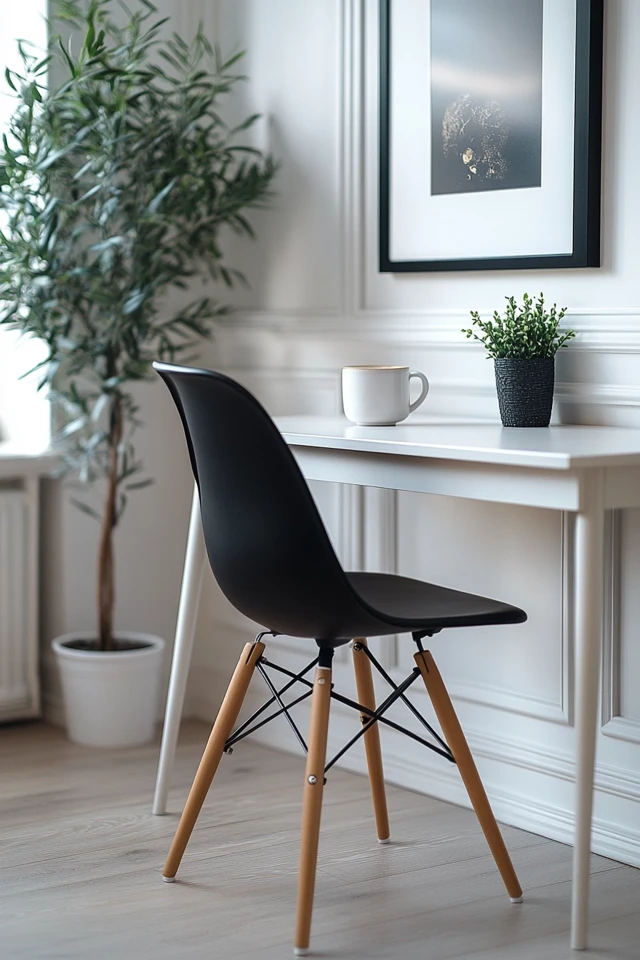Minimalist design proves that less can indeed be more. By focusing on simplicity, clean lines, and functionality, minimalist rooms create spaces that are serene, uncluttered, and effortlessly beautiful. But don’t confuse “minimalism” with being plain—there’s an art to designing a space that feels both curated and cozy while embracing an aesthetic that values negative space.
In this blog post, we’ll explore 10 minimalist aesthetic room designs to inspire your next makeover. Whether you’re decorating a bedroom, living area, or workspace, these designs will help you achieve an uncluttered, elegant vibe with plenty of style.
1. Scandinavian-Inspired Minimalist Bedroom
Scandinavian minimalism combines cozy textures with clean lines and a neutral palette, creating a perfect balance between warmth and simplicity.
Key Features:
- Color Palette: Whites, soft greys, and warm beiges dominate the space.
- Natural Elements: Incorporate wood finishes and greenery (like a snake plant).
- Functional Furniture: Choose simple, streamlined pieces like a low-profile bed frame and a small wooden nightstand.
Design Tip: Layer soft textiles like linen bedding and knitted throws to keep the room cozy and inviting.
2. Japandi-Style Living Room
Japandi is the perfect fusion of Japanese minimalism and Scandinavian design. It highlights harmony, natural materials, and a muted aesthetic.
Key Features:
- Neutral Tones: Beige, taupe, and charcoal set the mood.
- Natural Materials: Use bamboo, light wood, and soft linen upholstery.
- Functional Decor: Minimalist shelving, paper lanterns, and handcrafted pottery.
Design Tip: Keep decor purposeful—stick to 2-3 accent pieces like a neutral vase or textured rug.
3. All-White Minimalist Aesthetic Room
A monochromatic, all-white room exudes modern minimalism and makes spaces feel fresh, clean, and expansive.
Key Features:
- Pure Palette: Crisp whites paired with subtle off-whites or creams.
- Textural Details: Add interest with boucle chairs, cotton curtains, or plush rugs.
- Accent Lighting: Use sculptural table lamps or pendant lights in white or silver.
Design Tip: To avoid the space feeling “cold,” introduce soft textures and greenery for warmth.
4. Industrial Minimalist Bedroom
Industrial minimalism combines the raw edge of industrial design with the simplicity of minimalist style.
Key Features:
- Materials: Concrete, metal, and reclaimed wood.
- Color Scheme: Dark greys, black, and muted browns for a moody aesthetic.
- Functional Pieces: Sleek metal bed frames, exposed shelving, and Edison bulbs.
Design Tip: Leave walls bare or opt for subtle black-and-white wall art to maintain the minimalist aesthetic.
5. Neutral Boho Minimalist Room
Neutral boho minimalism merges the free-spirited essence of bohemian design with the restraint of minimalism.
Key Features:
- Colors: Warm neutrals like sand, cream, and taupe.
- Textured Decor: Woven rugs, macrame wall hangings, and jute baskets.
- Natural Accents: Incorporate rattan furniture and dried pampas grass.
Design Tip: Keep boho elements subtle—limit patterns and stick to earthy hues to maintain minimalism.
6. Minimalist Workspace with a Sleek Design
Minimalist workspaces are functional and distraction-free, encouraging productivity while remaining stylish.
Key Features:
- Furniture: A simple desk, ergonomic chair, and floating shelves.
- Colors: White, black, and wood tones for a modern, clean look.
- Lighting: Sleek desk lamps or LED light strips.
Design Tip: Use hidden storage solutions to keep surfaces clear and organized.
7. Textured Minimalist Living Room
Adding texture to a minimalist living room brings depth and comfort to an otherwise pared-back space.
Key Features:
- Color Palette: Warm whites and soft neutrals.
- Layered Textures: Boucle armchairs, wool throws, and stone or ceramic decor.
- Focal Points: A large, neutral sofa or sculptural coffee table.
Design Tip: Use large, neutral art pieces or mirrors to decorate walls without overwhelming the space.
8. Monochromatic Grey Minimalist Room
Grey tones bring sophistication and calm to minimalist spaces, making them perfect for bedrooms or living rooms.
Key Features:
- Gradient Shades: Light grey walls with charcoal or slate accents.
- Minimal Decor: Focus on sleek furniture and 1-2 statement pieces.
- Textures: Mix matte surfaces with soft, plush fabrics like velvet or wool.
Design Tip: Balance cool greys with warm-toned wood or metallic accents to keep the space from feeling too stark.
9. Mid-Century Modern Minimalist Room
Mid-century modern design’s clean lines and iconic furniture pair perfectly with minimalism’s clutter-free aesthetic.
Key Features:
- Furniture: Classic mid-century pieces like an Eames chair or tapered-leg sofas.
- Colors: Muted neutrals with occasional pops of mustard, teal, or olive green.
- Materials: Wood, leather, and glass finishes.
Design Tip: Keep decor minimal—think a statement chair, a simple rug, and 1-2 art pieces.
10. Minimalist Bedroom with Built-In Storage
In minimalist spaces, functionality reigns supreme, and built-in storage is a perfect solution for keeping clutter at bay.
Key Features:
- Color Scheme: Whites, creams, and soft greys to keep the room light and airy.
- Smart Storage: Hidden storage under beds, built-in shelves, or wardrobes with clean lines.
- Minimal Furniture: Stick to the essentials—bed, nightstand, and a single accent chair.
Design Tip: Opt for low-profile furniture to keep the space feeling open and uncluttered.
Picture Gallery
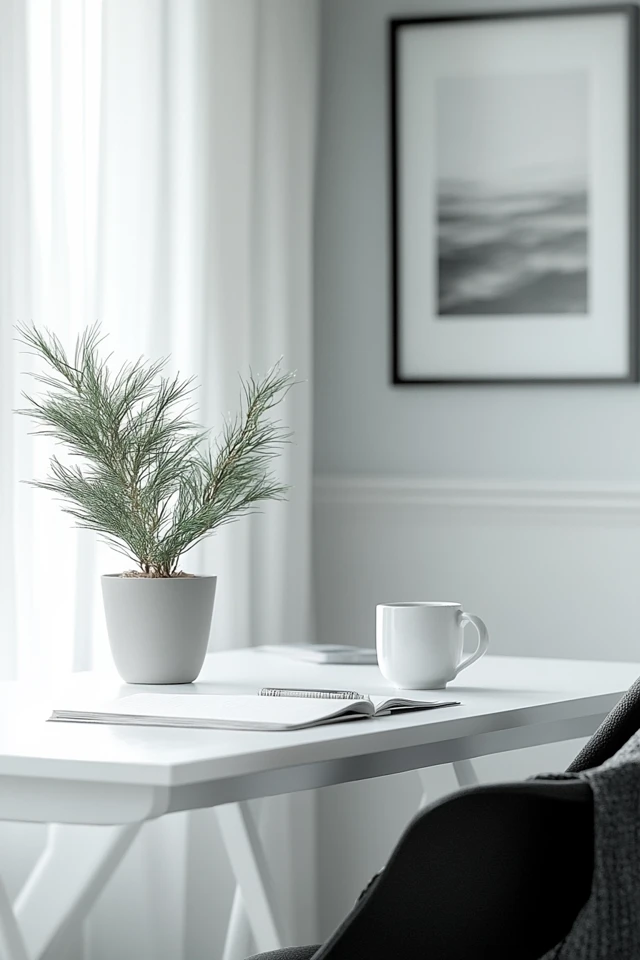
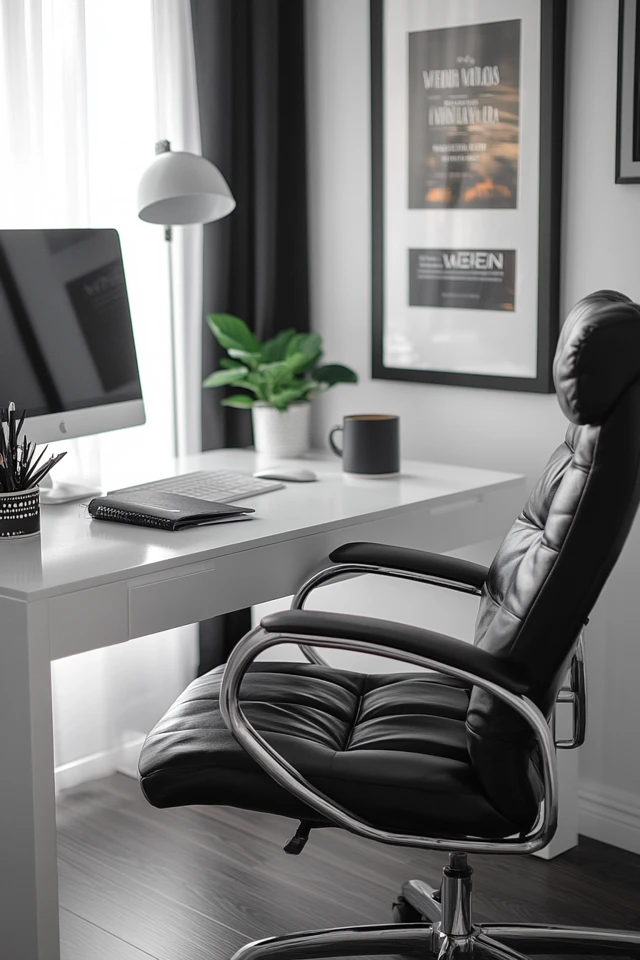
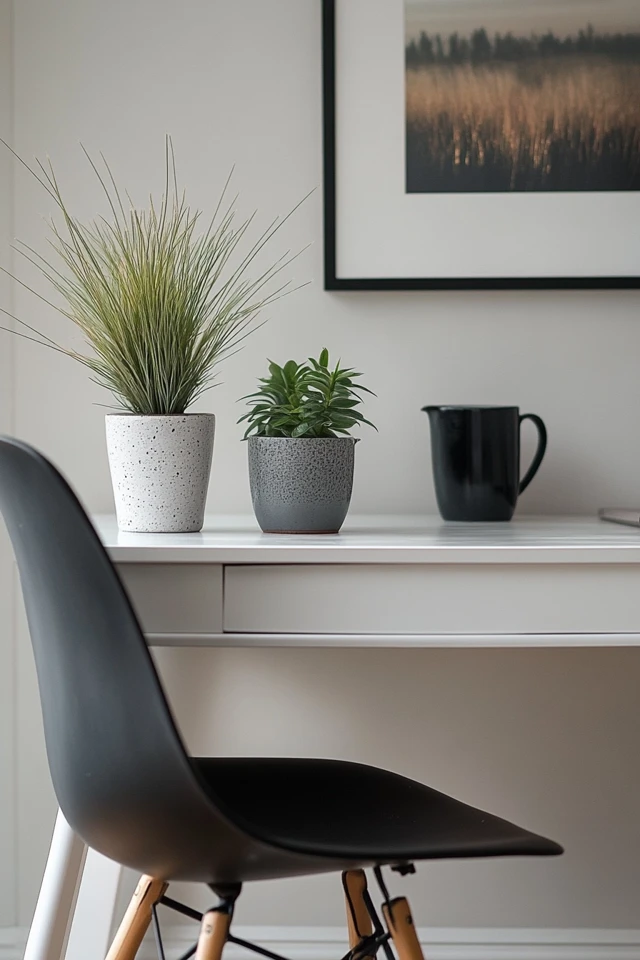
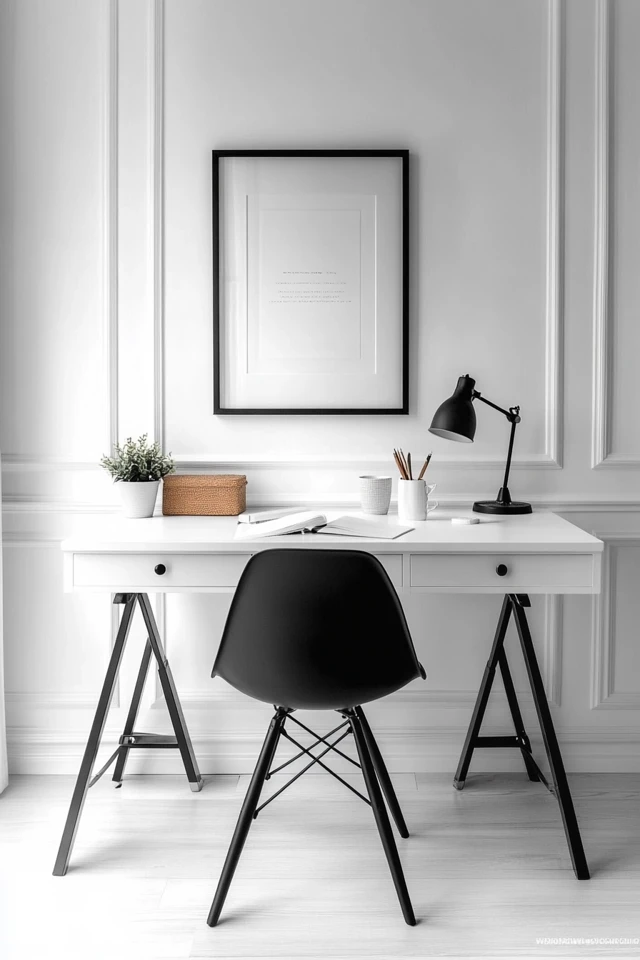
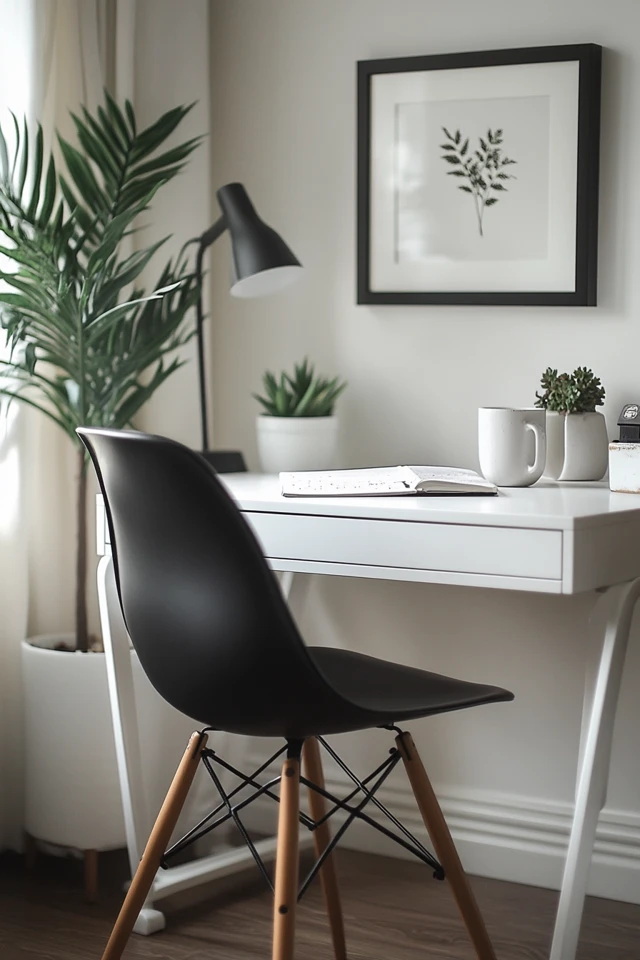
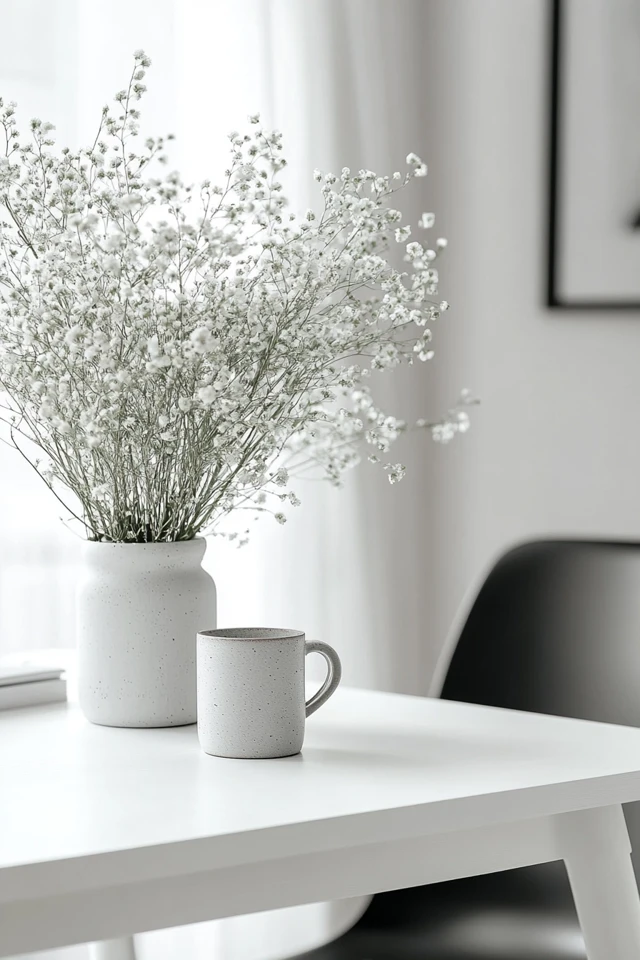

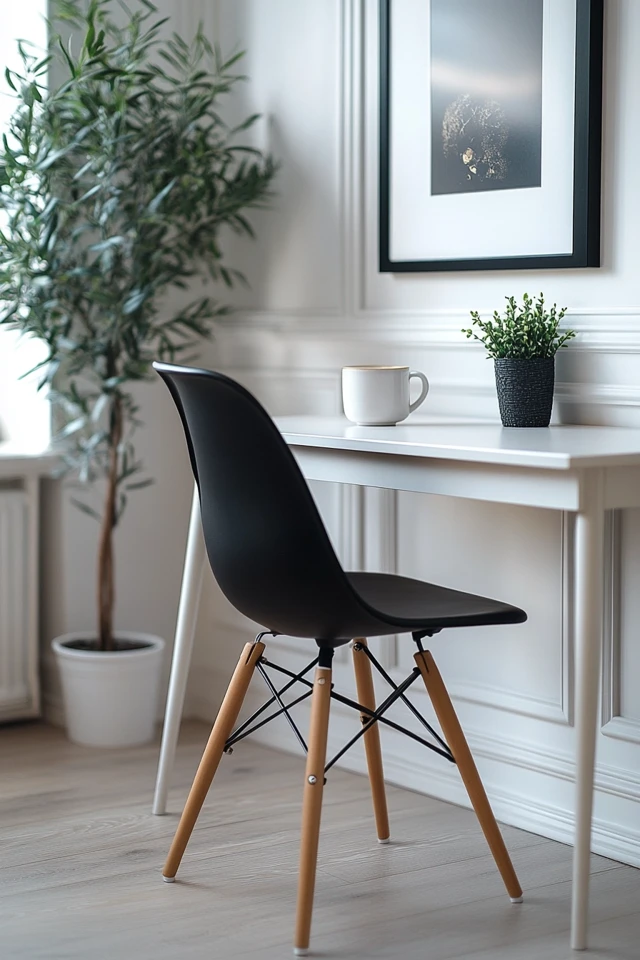
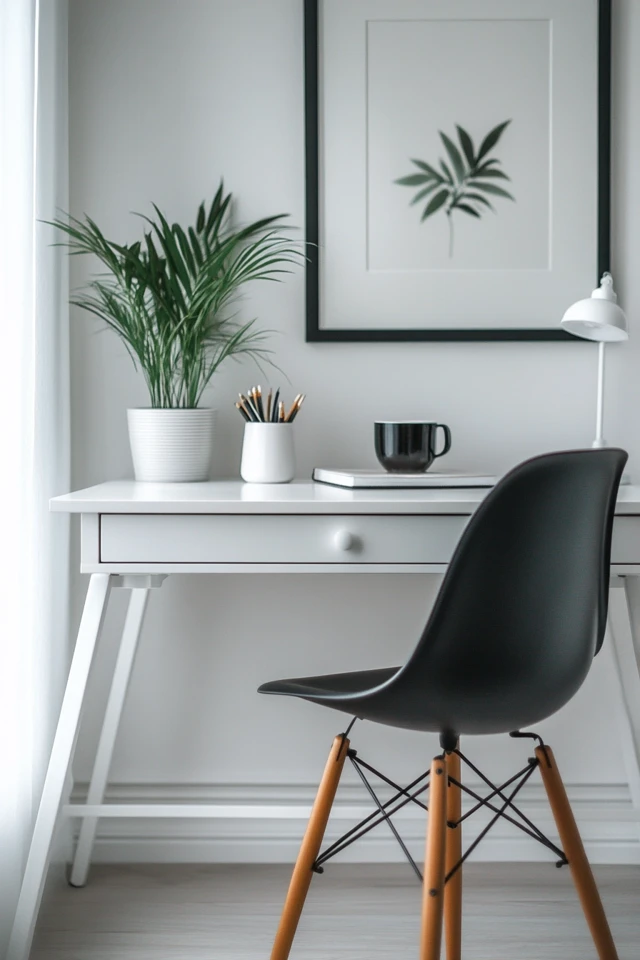
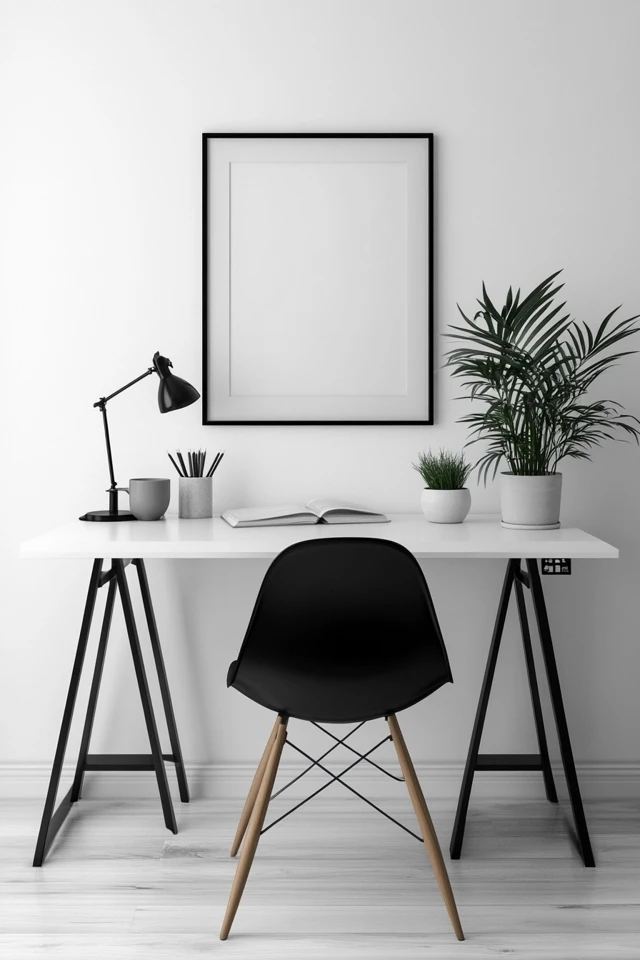
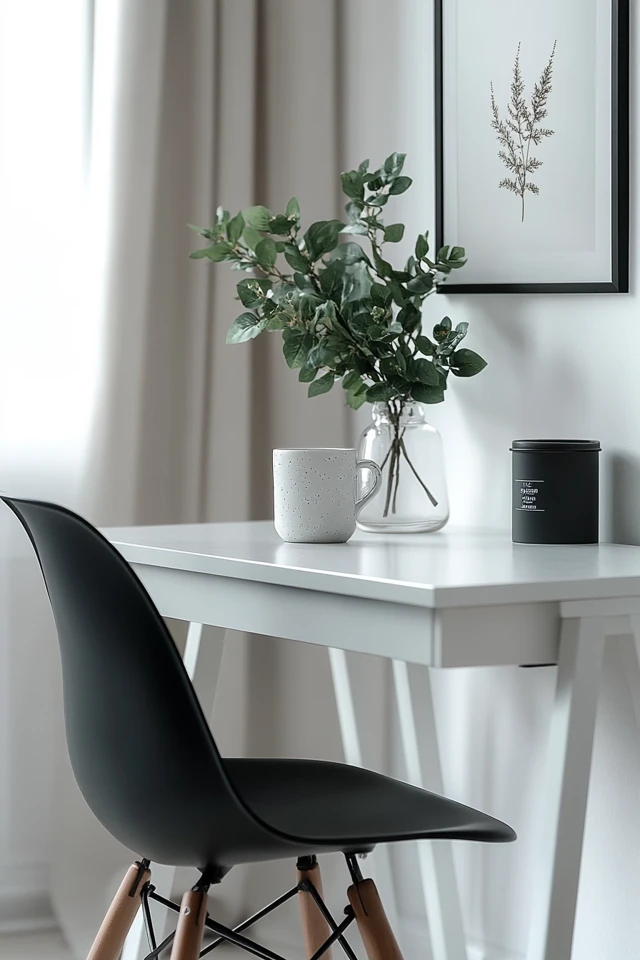
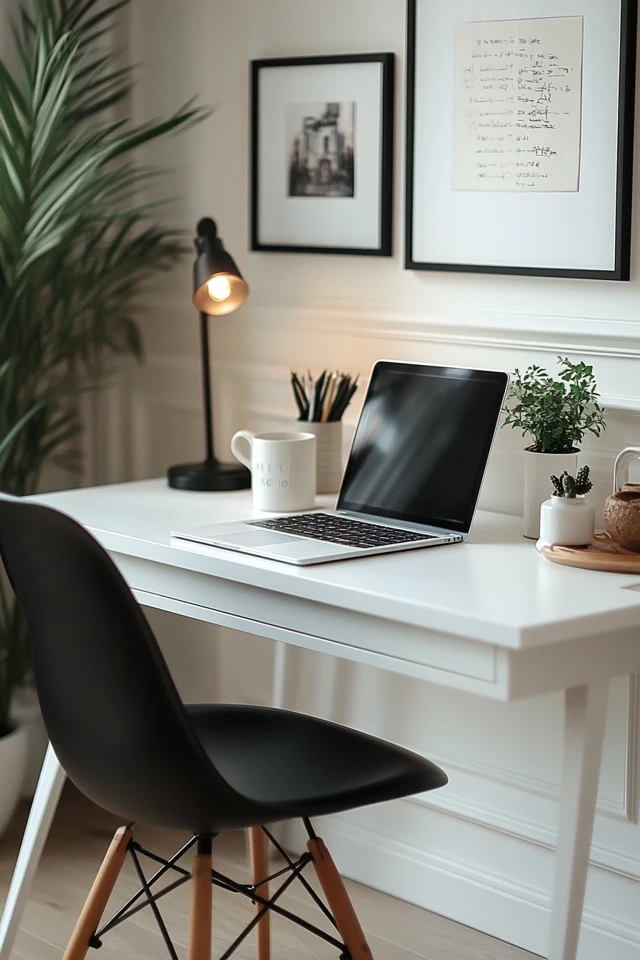
Conclusion
Minimalist aesthetic room designs prove that simplicity and style go hand in hand. By focusing on clean lines, purposeful furniture, and curated decor, you can create spaces that are peaceful, functional, and beautiful. Whether you’re drawn to Scandinavian minimalism, Japandi, or industrial edge, there’s a design to suit every taste.
Take inspiration from these 10 ideas, and start designing a minimalist space that reflects your personality while embracing calm, uncluttered living.
FAQ
1. What are the key principles of minimalist room design?
Focus on simplicity, functionality, clean lines, and a clutter-free space. Choose a neutral color palette and keep decor intentional.
2. How do I make a minimalist room cozy?
Incorporate soft textures like wool throws, linen bedding, and plush rugs. Use warm lighting and natural materials to add comfort.
3. What colors work best for minimalist rooms?
Neutral tones like white, beige, grey, and black work best. You can also include muted colors like sage green or soft taupe.
4. How can I maintain a clutter-free minimalist space?
Use smart storage solutions like built-in shelves, hidden compartments, and multi-functional furniture to keep surfaces clear.
5. Is minimalist design expensive?
Not necessarily! Focus on quality over quantity, repurpose existing furniture, and use affordable decor like neutral art or plants to achieve a minimalist aesthetic.

